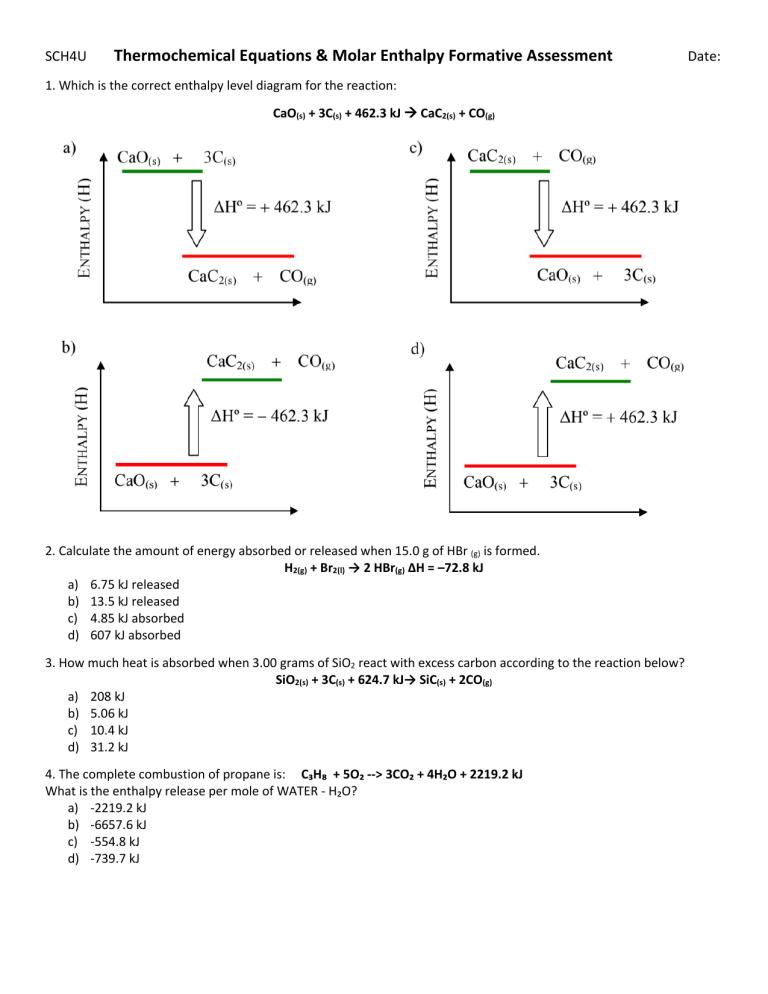
SCH4U Thermochemical Equations & Molar Enthalpy Formative Assessment 1. Which is the correct enthalpy level diagram for the reaction: CaO(s) + 3C(s) + 462.3 kJ à CaC2(s) + CO(g) 2. Calculate the amount of energy absorbed or released when 15.0 g of HBr (g) is formed. H2(g) + Br2(l) → 2 HBr(g) ∆H = –72.8 kJ a) 6.75 kJ released b) 13.5 kJ released c) 4.85 kJ absorbed d) 607 kJ absorbed 3. How much heat is absorbed when 3.00 grams of SiO2 react with excess carbon according to the reaction below? SiO2(s) + 3C(s) + 624.7 kJ→ SiC(s) + 2CO(g) a) 208 kJ b) 5.06 kJ c) 10.4 kJ d) 31.2 kJ 4. The complete combustion of propane is: C₃H₈ + 5O₂ --> 3CO₂ + 4H₂O + 2219.2 kJ What is the enthalpy release per mole of WATER - H₂O? a) -2219.2 kJ b) -6657.6 kJ c) -554.8 kJ d) -739.7 kJ Date: 5. Consider the reaction: S(s) + O2 (g) → SO2 (g) DH = -296 kJ/mol of S a) How much heat is evolved when 275 g of sulfur is burned? [A: q = +2.54 x 103 kJ] b) Is this an endothermic or exothermic reaction? c) Represent this reaction graphically (draw a potential energy diagram). Label the reactants, products, and DH. d) Do the reactants have more energy or less energy than the products? 6. A 50.0 mL sample of a 1.0 mol/L aqueous solution of hydrochloric acid, HCl(aq), was mixed with 50.0 mL of a 1.0 mol/L aqueous solution of sodium hydroxide, NaOH(aq). The solutions were mixed by stirring. The quantity of thermal energy transferred, qsurrounding, was determined to be -2.9 kJ, and the reaction is exothermic. Calculate the molar enthalpy change for this reaction, DHneut. [A: DHneut = -58 /mol] Page 2 of 3 7. When 1.28 g of iron (III) oxide reacts with 0.27 g of aluminum, the heat released is 4.26 kJ. Use this information to write a balanced thermochemical equation. [A: -852 kJ] Page 3 of 3








